Popular Herbs for Growing and Cooking
Did you ever want to have an herb garden–or maybe just a potted plant or two? If so, take a look below at the information on some popular herbs! Thanks to Nino Ridgeway and her great class for many of the tips!
There are many herbs that are great for cooking, as well as some that are just ornamentals. Here are some long time favorites!
Parsley
I always thought of parsley as a relatively boring herb, better suited for garnish than cooking. But the first time I tasted Parsley Boiled Potatoes, I was a convert–how much difference can a little parsley make!
Cultivation: Soak seeds for 24 hours before planting. Discard seeds after one year. Fairly winter hardy and will last outdoors part way into our chilly Wisconsin winters.
Harvest: Harvest outside leaves first.
Varieties: Curled parsley is good for salads, dips, garnish. Flat Italian parsley is stronger and better for cooking.
Cooking Notes: Parsley is highly nutritious.
Basil
Basil in the classic pesto herb (though cilantro, arugula and other herbs work great too). I freeze mass quantities of pesto every year to get me through the long cold winters and love adding it to a Tomato Feta Salad every fall!
Cultivation: Basil hates cold even more than most herbs so wait to plant until nights are consistently over 50. According to Nino, basil may “sulk all summer” if it gets too cold in the spring ;-). Seeds last 4-5 years, though some varieties won’t grow from seed. Needs lots of nitrogen so fertilize once or twice over the summer.
Harvest: Pick tips including flower buds; do not pick single large leaves.
Varieties: many varieties including lemon, purple, cinnamon…
Cooking Notes: Good with tomatoes, stir fries, eggs, vegetables. Also consider making purple basil vinegar.
Rosemary
Rosemary is another herb that can make potatoes sing! Try roasting potatoes with rosemary when you have the boring potato blues!
Cultivation: Rosemary is a tender perennial and doesn’t like to be pot bound. It is hard to grow from seed so take cuttings or buy plants. In cool climates, may overwinter indoors in a cool brightly lit spot–don’t fertilize or water too much during dormant period from November to mid-February. (I have also seen rosemary survive in pots that are buried then covered with thick quilts even in chilly Wisconsin.)
Harvest: Picking tips encourages bushiness.
Cooking Notes: Use sparingly until you are used to cooking with fresh rosemary. Good with meat and poultry, potatoes, breads, soups & stews.
Thyme
This year I started cooking a lot with fresh thyme. From Sun-dried Tomato and Spinach Quiche to Roasted Vegetable Galette to tossing it into dishes willy-nilly, it is one of my “go to” herbs for jazzing up a new recipe!
Cultivation: Other than lemon thyme the culinary varieties of thyme can be grown from seed. Many (but not all) are winter hardy as far north as zone 4. Thyme can also be overwintered indoors.
Harvest: Harvest regularly in small quantities to encourage growth. Do not remove more than 1/4 of the leaves in the fall or the plant will not survive the winter.
Varieties: There are many varieties, some of which are ornamental only. Ornamental thyme must be grown from division or cuttings. Popular culinary varieties include German thyme, lemon thyme, and French thyme (less winter hardy).
Cooking Notes: Can be used dried or fresh in cooking. Good for soups, stews, salads, breads.
Sage
The best chicken soup I ever had was dense with vegetables and full of the robust flavor of sage, served for Thanksgiving at my mother’s retirement community. Hmmm, I wonder if they would give out the recipe…
Cultivation: Hardy in zones 4-10, sage can grow into a small shrub-like plant. Some “sage” is not actually sage, for example, the popular flowering plant Russian Sage, is actually a member of the mint family.
Harvest: Sage blooms on the second year wood, so the usual pruning directions don’t apply. It should be cut after it blooms in July.
Cooking Notes: Nino likes pineapple sage in fruit salad and tea and sage is a classic Thanksgiving dressing ingredient.
Oregano
Nothing says Italian cooking like oregano. ‘Nuf said??
Cultivation: Most oregano is hardy to zone 5, with some tendencies to invasiveness. I can testify that mine completely overpowered the thyme, I planted next to it! But it has survived over a decade outdoors through some bad Wisconsin winters.
Harvest: Harvest regularly and cut it back hard in June when it starts to flower.
Varieties: Nino feels that the best cooking variety is Greek oregano. Some varieties have little flavor and are grown as ornamentals.
Cooking Notes: Good in Italian cooking and especially with tomatoes. Also good in soups, stews and salad dressing.
Miscellaneous Herb Notes
Besides these popular herbs, there are many more that are a delight to work with.
Nino commented that if she doesn’t know what herb to add, she will often use marjoram. It is considered a tender perennial (USDA zones 7-9) and I kept this alive all last winter in a pot, using it in a delicious braised chicken dish and beef stew.
Mint comes in many flavors but can be invasive, so consider growing in containers. Every year, we overwinter peppermint in the garage where it dies down, then pops up faithfully when spring arrives. One year I grew a stevia plant next the mint and we could do sweetened tea in one snip of the scissors!
Cilantro and dill both bolt (get leggy and go to seed when they get uncomfortably warm) easily. Despite my love of both of these herbs, I am letting my CSAs grow them for me (Nino recommends planting in succession, that is starting new plants every few weeks.) Dill seeds are considered more flavorful than the leaves and flowers and as such are an important ingredient in most “pickling spice.”
Chives blossoms are a great addition to homemade wine vinegar, as are many other herbs.
No green thumb–or too busy for gardening? Fresh herbs are so readily available that there is no excuse not to take advantage. Me? I should have bought stock in the herb growers who supply fresh herbs to grocery stores–even more inspiration for growing my own now!

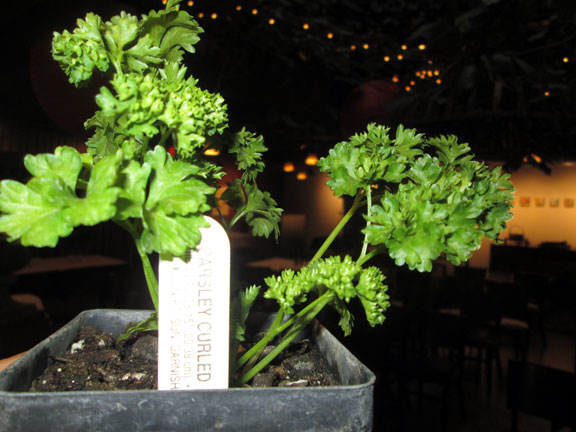
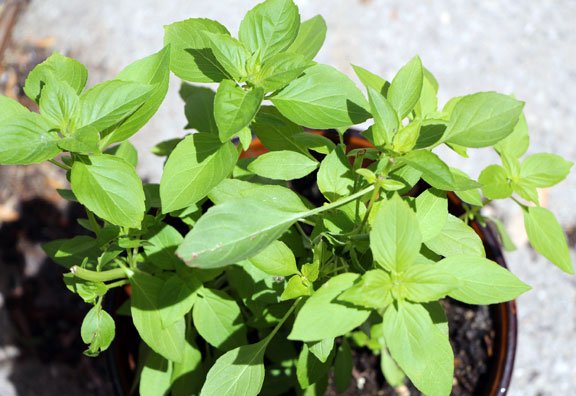
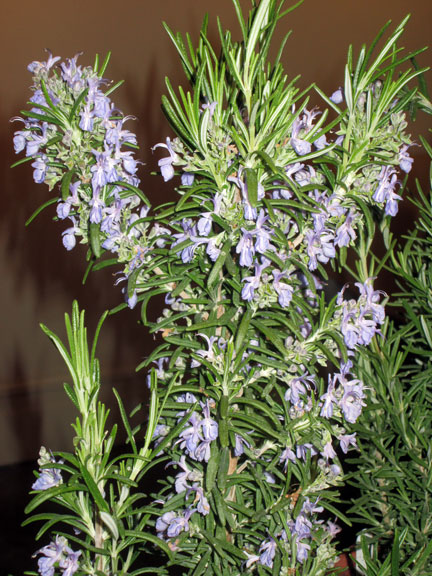

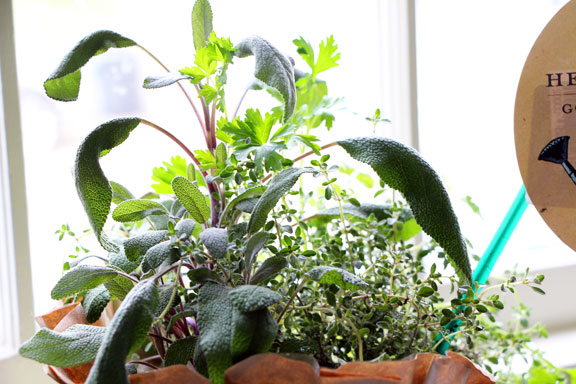

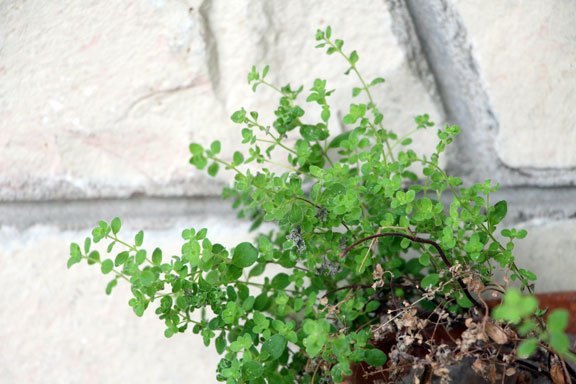
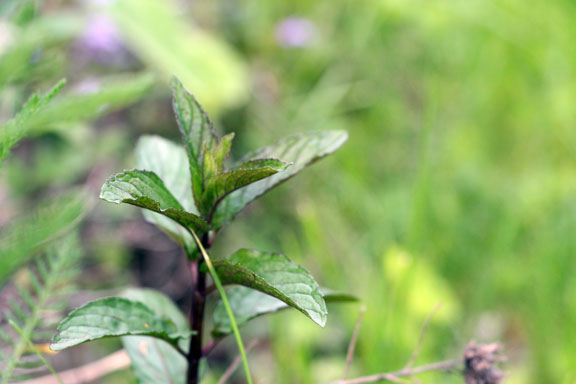

This is a very handy list, Inger! Thanks!
It has been such a joy to have more of my own herbs to cook with this year!
Thanks for such an informative post! I’m in the process of starting my own herb gardening…but my results haven’t been so great thus far. I planted spearmint in my flower garden but it died (guess I don’t have much of a green thumb). Based on your post, I think I’ll plant spearmint attempt #2 in a pot – just in case I’m successful this time!
We actually like the peppermint better than the spearmint, but I am pretty sure that they are both here for life. I wish you were close enough to share–I’d dig up a nice clump of each for you!
Lovely post! So interesting and informative. I grow quite of few herbs and bring some in for the winter. My rosemary has survived 3 years wintering inside. Love your photos!
Thanks Kathy. I bought two little Rosemary plants this year in the hope that I’ll get my green thumb back this winter–your success gives me hope!
I am so jealous of your beautiful herbs! They can double as houseplants!
Some of them will double as houseplants over the winter I hope!
What a helpful and inspiring post! Growing your herbs is such a great idea, for flavor and for saving money.
I have already used the lemon basil and am looking forward to more!
Great post! I’m growing basil, rosemary, oregano and chives this year. I’ve never had luck with cilantro so it reassures me to read here that it bolts easily.
I sooo love cilantro and really wanted it to grow well (so I’d always have it), but my philosophy is that if something is more difficult than fun, I should buy it somewhere else!
Just love all those herbs!
Thanks!
I need to find ways to use more sage.
If I ever get that soup recipe with the sage, I’ll be sure to post it.
What GREAT post, Inger. I’d have to say my favorite out of this batch is Rosemary. I love the romance of Rosemary and of course its pungent flavor and aroma. (I read somewhere to throw it on the fire when you barbecue. Have you heard that?)
There are so many plants that people don’t eve realize are herbs. Take The Rose for example, it too is an herb:) I myself find it all so fascinating, cooking, healing, aroma, heritage, they have it all. I do think sometimes that if I didn’t have the blog I have, (and the other three poorly neglected blogs) I would have a blog devoted to herbs.
Thank you so much for sharing…
P.S. I hope you will be joining us for the Picnic Game this year. Drop by for your letter if you are. Seven letters have been taken already!
Thanks for the reminder on the picnic Louise. I just commented with a couple ideas.
Last winter my rosemary died after growing well for a number of years–even after it had a glorious summer. If I can get another big enough I will try the fire idea. And you know I kept eying my “up north” roses last year, so maybe I’ll need to figure out something to do with them.
My Rosemary died too Inger, not last year but the year before. I still don’t understand why because it too was doing so well. I will try again perhaps next year but I want a plant that has a good start. Not one of those really tiny plants. I think it depends on the variety too.
Guess what? You’re going on a picnic and you are bringing…the letter I I can’t wait to “taste” what you tote!
Thanks Louise! Time to start experimenting!!!
YOU go GIRL!
Hi Inger,
This is a lovely post. So interesting to know these herbs can be grown at home. But I imagine one needs a green thumb! My husband is trying a garden in containers this year. His experience so far has been a bit humorous and frustrating.
I have my share of failures in gardening (and cooking). If I grow something twice and it dies both times I just usually give up and grow something else 😉
I am very fond of oregano and basil especially 😀
Beautiful post!
Cheers
CCU
Thanks! I used some of the lemon basil yesterday and was impressed how fragrant it was!